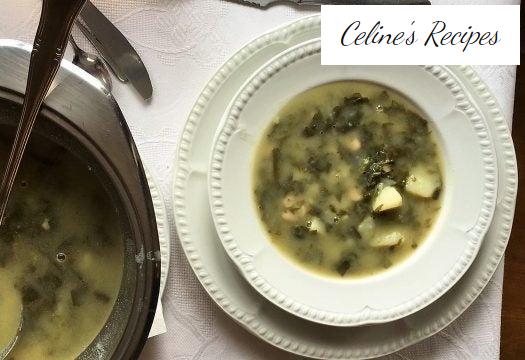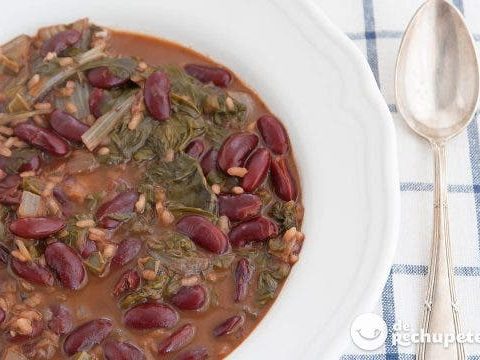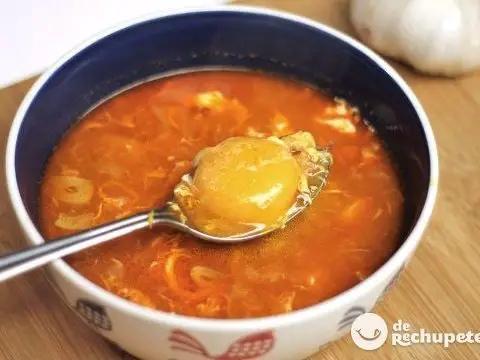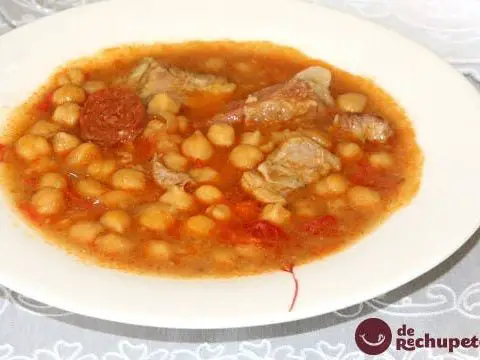
Info.
- Easy
- 90 minutes
- For 6 people
- € 2 / person
- 325kcal per 100g.
How to prepare Galician broth .
These days one of my favorite broths for dinner and combat the cold #mantitaysofa mode is the Galician broth .
I have been lucky enough to be able to bring me from Galicia this weekend all the ingredients to make this broth recipe and prepare it just like my grandmother Lucrecia did in the village.
I have made a casserole for 3 or 4 dinners, because the broth improves from one day to the next. Each day is better than the previous one, like the Gloria broth or part of the stews we have on the blog.
So if you want to have one of the best restoratives made in Galicia to recover from a long day of work, this is your recipe.
The Galician broth does not have a unique recipe and it is that what was at home was put in the casserole. Like the Galician stew and the Galician pot that changes if it is from Barco de Valdeorras to if they prepare it in Lalín. Common to all recipes are certain ingredients that are used to a greater or lesser extent.
A few cachelos, a touch of daub, some beans (or the vegetables of the season), meat (veal and pork), a good piece of smoked Galician chorizo and seasonal vegetables. Usually turnip greens, turnip greens, collards, or white cabbage.
Broth “as if it didn’t cost” , we put everything into the casserole: a piece of pork, a chorizo with onion and pumpkin, rib, pork soba … even a botillo if we have it. Don’t panic, today’s recipe, as far as it goes, is much lighter.
Before cooking the Galician broth. Beans and meat.
- As I have bought some dried white beans, vacuum packed, it is necessary to soak them the day before, the day before.
- At least they should be about 10-12 hours in warm water, with a handful of salt, and that completely covers the beans.
- Before starting with the recipe, the water passes to remove impurities, and incidentally we check if there are any damaged or too hard beans. In this way we will avoid encountering it in the broth.
- If we are going to give the broth more consistency, we put the salted pork parts to soak: ear, tail, cap and pork shoulder. Changing the water at least once (as in Galician stew ) .
- Before starting, drain the ingredients well and reserve. We put a large saucepan with water on the fire, about 5 liters approximately.
Galician broth preparation
- We put the beans in a saucepan with cold water, soak them for about 12 hours.
- Add the beans that we had to soak, the chorizo, the meat and the anoint. We leave to cook over medium heat for an hour, foaming occasionally.
- Peel the potatoes and cut into cubes, flakes or laminates, as you like. They are added in the absence of 10 minutes of the final cooking of the broth, that is to say when the broth takes about forty minutes to the fire.
- Once the cooking time has passed, we remove the meat and the chorizo and reserve.
- We wash and chop the vegetables, in this case I have used white cabbage but I usually like it better with curly collard greens, which are very delicious.
- Add to the cooking water with the potatoes and cook for about twenty more minutes. It is time to taste salt and see if you need it, although it is usually not necessary because the cap, pork shoulder or rib. They provide a point of salt that has not been removed from everything in the soak.
- Chop the meat and chorizo into small pieces and introduce into the broth. We remove to put everything together.
- We give the final touch with a splash of extra virgin olive oil and that’s it.
Keep in mind that the broth is to take several days and that from the second it is perfect because the flavors come together much better, it is often said that they “grab”.
You can see all the photos of the step by step in the Galician broth recipe. Follow the preparation process and it will be perfect the first time.
Your tips for a fluffy broth
- You can tune the broth as you like, my mother adds pilongas instead of beans. The beans or white pods give an impressive white broth, my grandmother Lucrecia’s specialty.
- This broth is better made the day before and reheated, but don’t overdo it when it comes to reheating it either.
- Many people in Galicia add corn flour to give it consistency, although I don’t like it.
- If the beans are dry they are left as we have done in the recipe, to soak in cold water. But if you are lucky to get them fresh it is not necessary. You have to reduce the cooking time, and you will get a much softer broth.
- The vegetable is better to use in season, as I told you I like with white cabbage or cabbage. But for those who are passionate about turnip tops, you already have them all season canned. I can assure you that they are quite good.
- If you can’t get either dry or fresh beans, there is always the option of the pot. I have never tried it but I imagine they will be added to the end of everything after cooking the potatoes. The problem is that the water in the broth does not get as much flavor, but it is a valid option.
- If the broth is too loose we can do as in the Asturian bean stew . At the end of cooking add a few beans and mashed potatoes with a fork, and thicken it.
- And remember, this broth is served very hot. Generally as a first course at a meal or as the only one at a dinner. A good clay bowl keeps the heat and is the ideal container to drink it and feel like in Galicia.






